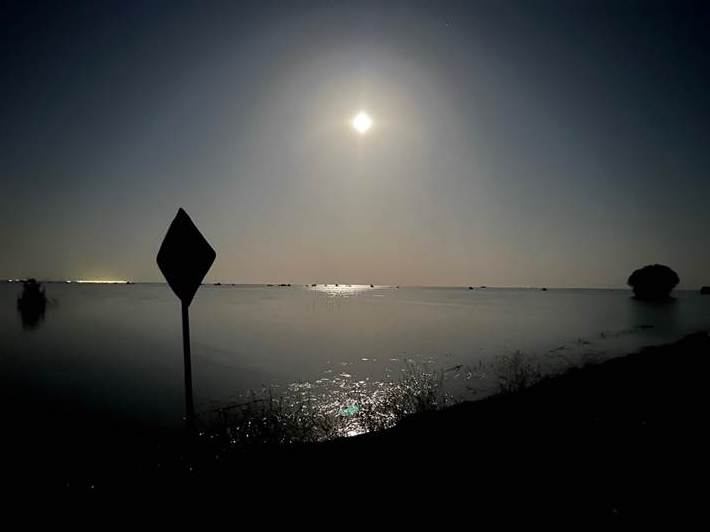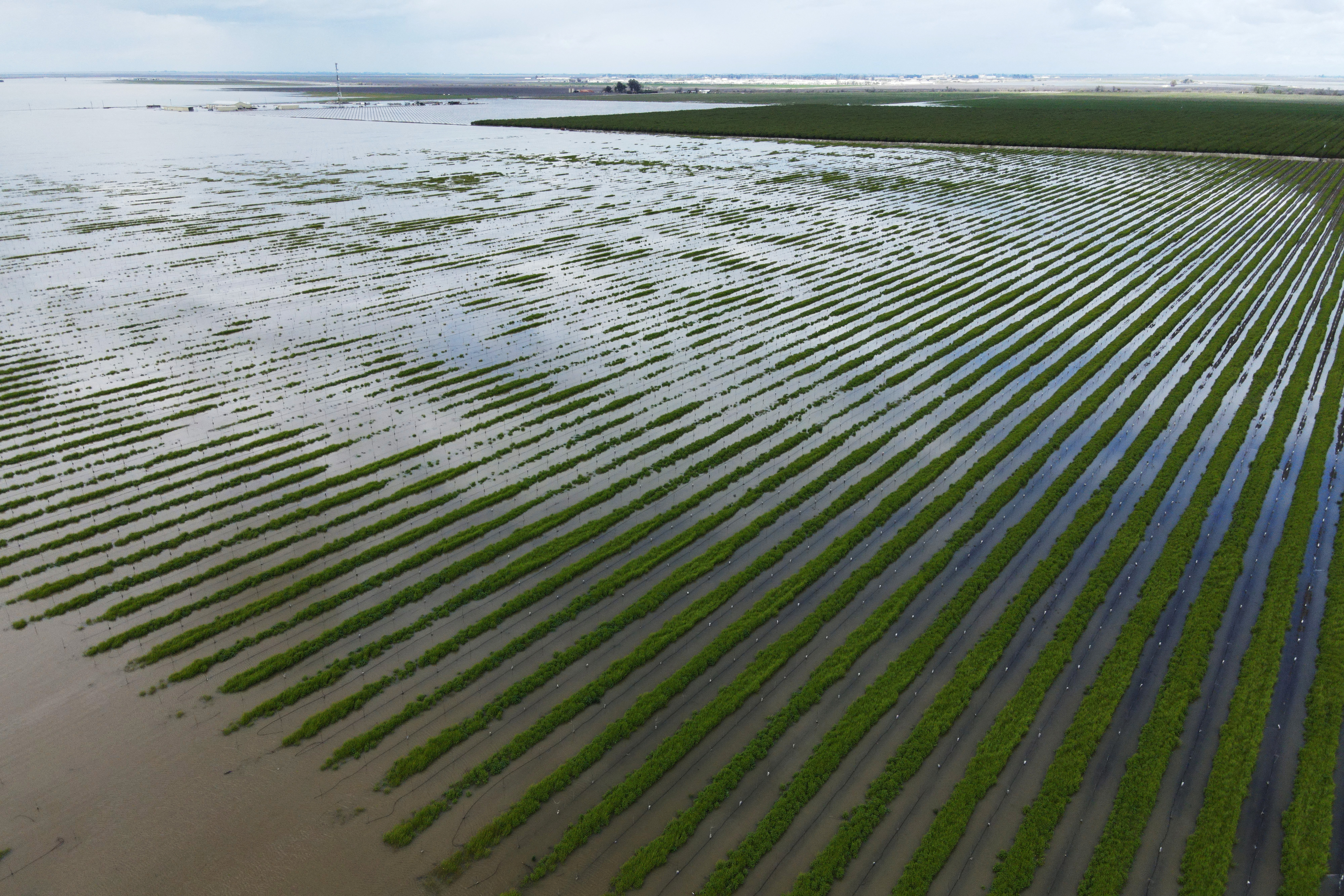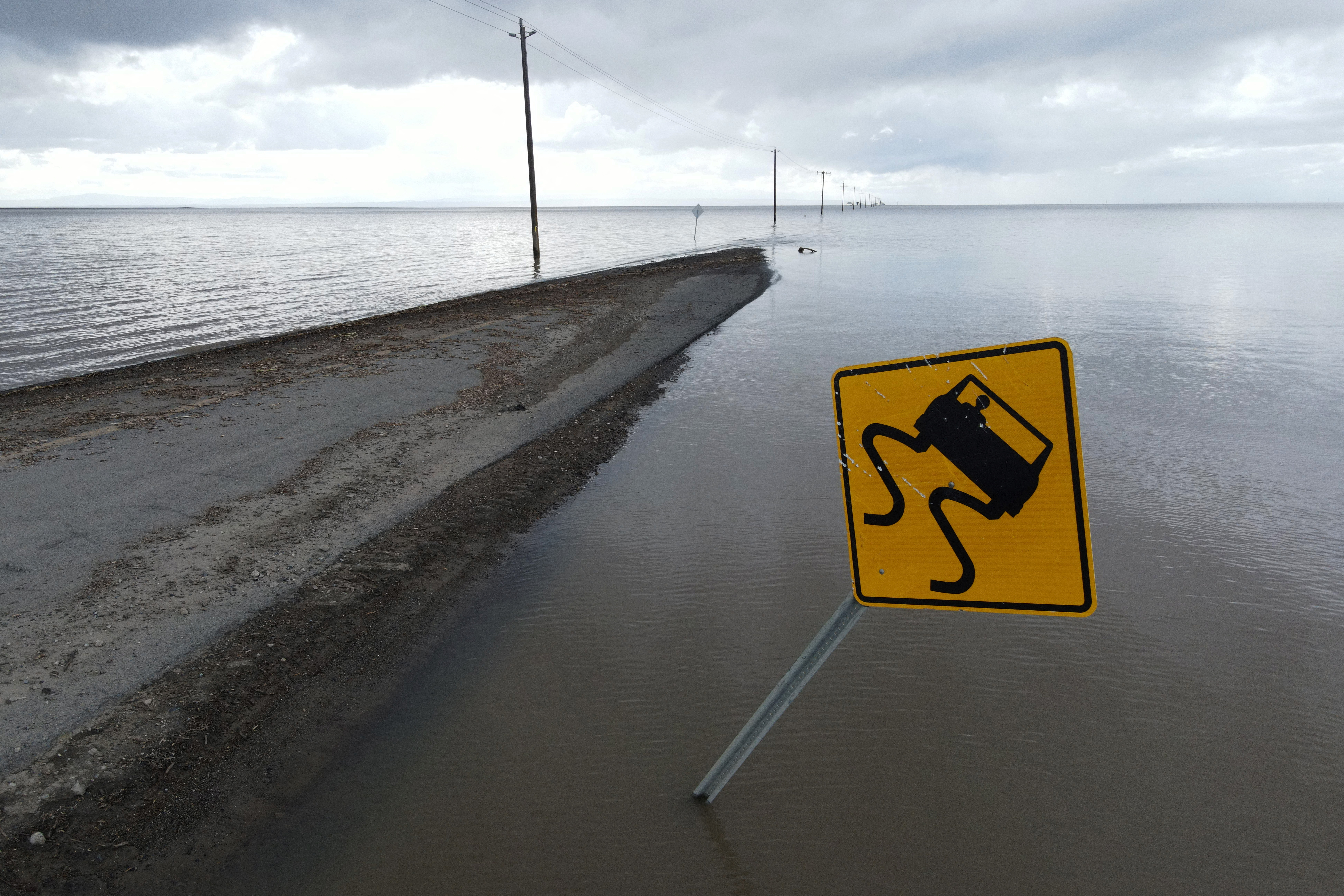
Los Angeles, California, US – The Tachi Yokut, who are the Indigenous people of California’s Central Valley, sing a song that describes how Lake Tulare pushes the people away and pulls them back, as wet and dry years cause the lake to flood and recede.
Leo Sisco, chairman of the Santa Rosa Rancheria Tribal Council, grew up hearing stories about the lake, which the tribe calls Pa’ashi. “When it would rise, it was a sign for us to go to higher ground, and when it recedes, come back,” he told Al Jazeera.
This past winter and spring, storms, heavy rains and record snowpack in California sent water rushing through the Central Valley, where it settled on the low-lying impermeable clay bed of Lake Tulare.
Since the 1800s, various policies and infrastructure projects have drained the lake to make way for homes and farmland. Now, water has flooded the farms and communities that put down roots on the lakebed.
Farmers and workers see the flooding as a disaster that has destroyed crops and put them out of work, but the Tachi Yokut are honouring the return of the lake by welcoming visitors and holding ceremonies along the shore.

The last time the lake returned in 1983, Sisco was a teenager and didn’t pay much attention. This time, he is grateful for the opportunity to bring his daughters and grandson to see the lake.
“To have a reappearance in this lifetime is truly a blessing for our people,” Sisco said.
“We believe that it should be preserved,” he continued. “Because this is the creator’s reminder of what was once here. This is a very minute portion of water that was here compared to what our ancestors got to enjoy.”
Healing process
Tulare Lake, once the largest freshwater lake west of the Mississippi River, has a history of growing and shrinking with wet and dry years.
The lake supported fish, birds and elk, according to Shana Powers, the cultural director for the Santa Rosa Rancheria Tachi-Yokut Tribe. It also sustained about 19,000 Yokut people, who were one of the largest tribes in California at the time.
When settlers arrived in the 1800s, they transformed the lake and life for the Yokuts.
European settlers brought diseases including smallpox and malaria that killed Indigenous people. Across the West, Gold Rush settlers massacred Indigenous people, including the Yokuts. Government programmes relocated Native Americans and sent their children to residential schools to disconnect them from their land, culture and language.

Encouraged by federal policy, settlers drained Tulare Lake for farmland and built levees to hold the water back. They also built dams along the rivers upstream to hold water that normally flowed into the lake. Gradually, the lake disappeared.
“There were many villages here,” Sisco said. “But when [the lake] went away, a lot of our culture went away, too.”
The Yokuts went into survival mode. Sisco said his grandparents and great-grandparents feared for their lives. “You couldn’t claim to be Native otherwise it was a threat on your life at that time,” he said.
“When the lake comes back, we feel that’s part of our healing process,” Sisco said.
Diverting water
According to the Los Angeles Times, the lake has expanded to cover more than 45,730 hectares (113,000 acres) — an area nearly as large as Lake Tahoe, 485km (300 miles) to the north.
Images published by the United States space agency NASA show flooded fields in Kings County, California. The roofs of houses and barns emerge from the waters. The lake has reclaimed farmland that produced cotton, tomatoes, wheat, almonds, dairy and poultry.
Kings County Farm Bureau Executive Director Dusty Ference told ABC News that about 36,425 hectares (90,000 acres) of farmland have been swallowed by the lake, and this has forced evacuations of cows and chickens. Ference said the Tulare Lake Basin agricultural industry has seen $140m in losses so far.
Republican state assembly member Devon Mathis told Agri-Pulse that around 120,000 workers in Tulare County have lost work and are suffering economic impacts.

The NASA images show a 23km (14-mile) dirt levee keeping most of the water out of Corcoran. So far, the city of 22,000 people has survived the flooding, although the waters breached a levee in March, inundating a home and several businesses.
In May, California Governor Gavin Newsom signed an executive order to divert floodwater, remove debris and repair levees in the Tulare Lake and San Joaquin River basins. The state is paying $17m to raise the levee that protects Corcoran by 1.2m (4 feet).
The executive order allowed water diversion away from the Tulare Lake Basin, including diverting water to recharge groundwater, and directing water into the Kern River Intertie, which connects to the California State Water Project.
Newsom committed to “advancing investments to protect communities throughout the state from future flooding”.
Sisco said the state wants to divert water to other areas to dry out the land again. “It’s basically reliving what they’ve done in the past,” he said.
The tribal chairman sent prayers to the farmers and workers who have lost their livelihood. “They’re out of a job. I don’t wish that upon anybody,” Sisco said. “But I think it’s a good learning experience for all of us involved.”
The future of the lake
Peter Moyle, professor emeritus of fish biology at UC Davis, argues that the lake should be restored as a habitat for fish.
“The mistake is not recognising that Tulare Lake is a real lake and is there for a reason — that you had all the conditions right for holding water,” Moyle told Al Jazeera.
“To think that each flooding event is an independent event is not great thinking, because these kinds of floods are going to reoccur,” he added. “And there are indications that, under climate change, we’re going to get big floods more frequently.”
“There’s a real need to sit down and think, what should be the future of the lake?” Moyle said.
Buzz Thompson, faculty director at Stanford University’s Water in the West programme, said it will likely take several years for the lake to disappear again, assuming California doesn’t have another wet year.

He said the floods will force the California government to make some difficult choices.
“California’s history as a whole is a history of its residents trying to control its water, trying to move the water around in drought years and trying to avoid the floods in the rainy years,” Thompson said. “It was our society’s hubris to believe that we could just change nature.”
California is living in a new climate reality of devastating floods, fires and drought, and the costs are mounting. Thompson said the state faces a choice between continuing to invest in higher levees and more robust infrastructure to control the water, or encouraging retreat from flood-prone areas.
In the case of Corcoran, he said it would be challenging to move a whole city. “That means you’re going to be breaking up a community. You’re going to be forcing people to move from their homes.”
Indigenous management
The idea of restoring Lake Tulare could have wind at its back. In recent years, California’s environmental policy has shifted to recognise Indigenous ways of managing land and water.
In the wake of more extreme and deadly wildfires, California has allowed Indigenous tribes to take a larger role in managing forests, including bringing back cultural burns. And after decades of tribal advocacy to restore the Klamath River, crews are now demolishing four dams along one of the largest rivers in California.
“My grandma used to say we’re supposed to be the caretakers of the earth. Instead, we’re damaging it,” Sisco said. “Climate change is a result of unnatural changes that are done by us. I think what Pa’ashi does is bring back a sense of normalcy to our people and to the environment.”







